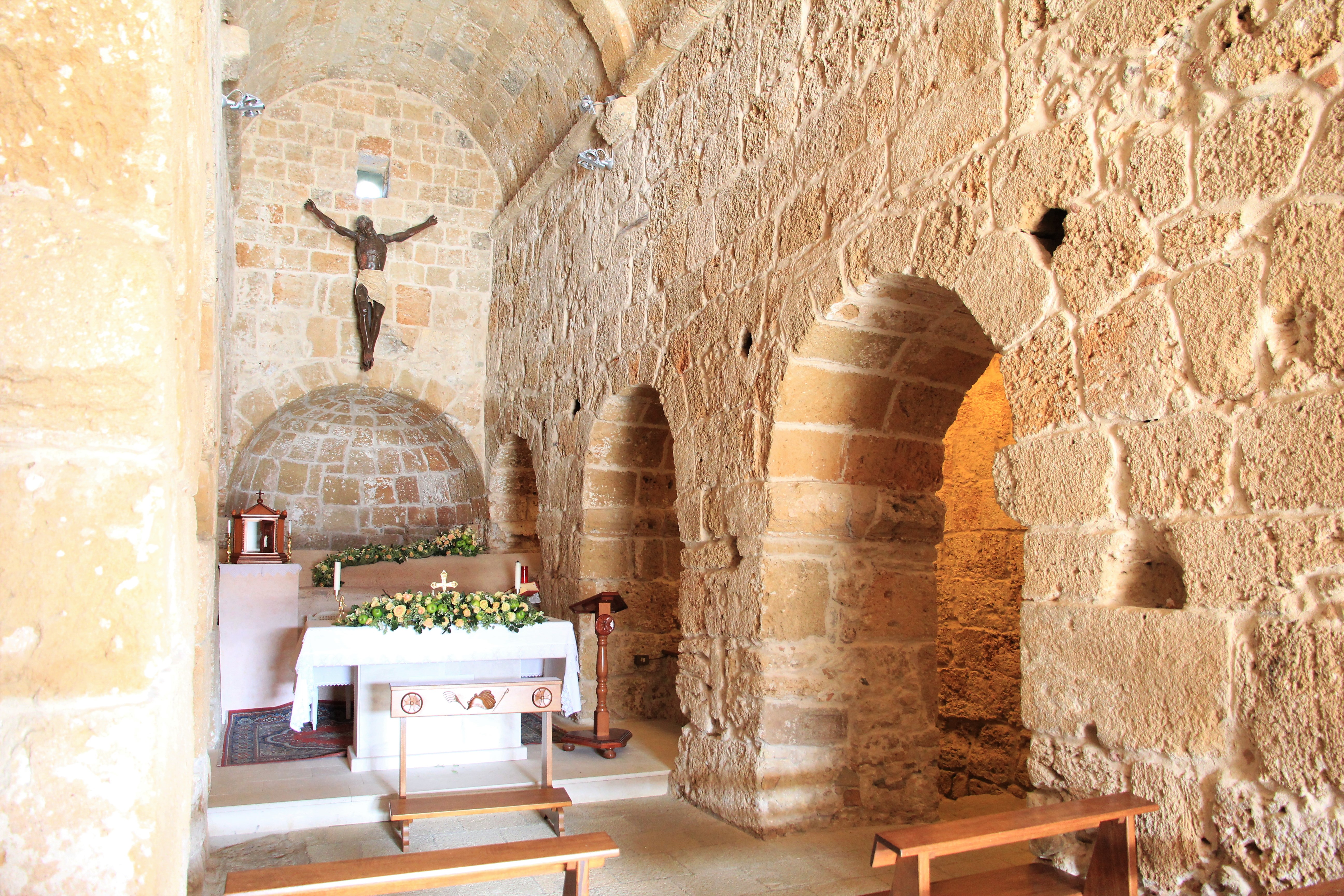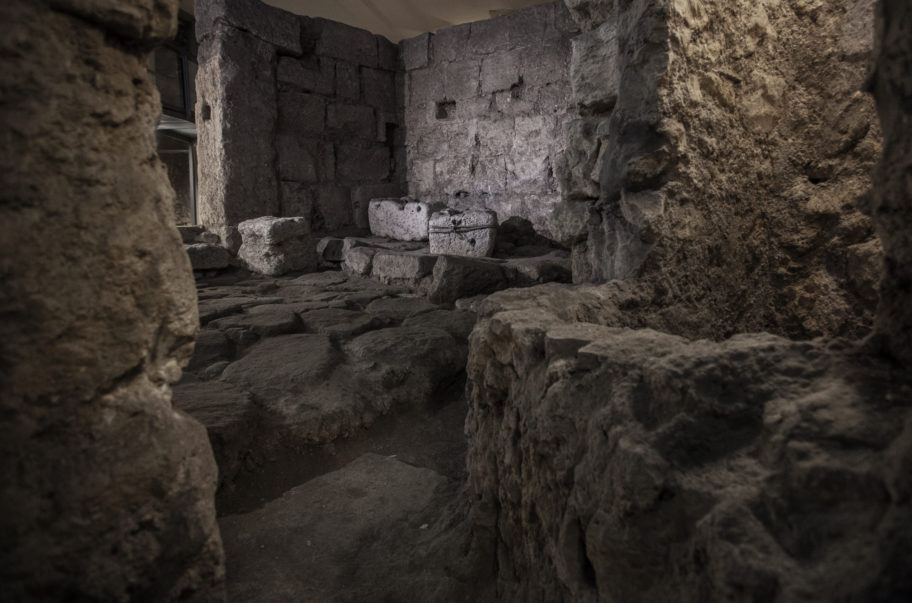Corpo Pagina
The places of Karales, theatre of the Passio of Sant’Efisio in the Byzantine Age (praetorium, tribunal), to a large extent were no longer used. The carcer, currently in S.Efisio road, is known from the Middle Ages. Some buildings had to be in ruins, but certainly their memory was preserved by all the citizens. The story of the Passio tells that, when Efisio was taken to the temple of Apollo, all the pagan statues fell and broke into pieces. Perhaps the narrator saw a very damaged building.
Near to the Capitolium, in an unknown era, a church dedicated to San Nicola de Capusolio (de Capitolio), mentioned in a medieval document, was built. Karales continued to be a thriving port city in the center of the Mediterranean sea, headquarters of the island’s main authority, the praeses. Its area kept growing with new streets, arcades and houses where today raises the Marina district. Many churches had changed their aspect: the pagan city had become a Christian one.
In Nora, in the Byzantine Age, the memory of Efisio was certainly strong in the cemetery that was located before the entrance of the city: here there was, probably, the tomb which contained the remains of the martyr.
In this area Christians were also buried, probably because they wanted to be interred near to the tomb.
The gravestones found remind the believers who perhaps lived in Nora, but also someone named Rogatus, lector maybe in a Noresian church, who dealt with the spiritual care of the population. It is believed that over the tomb of Sant’Efisio a little oratory was built, a little church, perhaps cross-shaped, later incorporated into the church rebuilt by the monks of San Vittore of Marseilles. Around this place a strong devotion, which survived the abandonment of the city in the early 8th century, had to develop.
The sanctuary was perhaps entrusted to a community of monks and it was certainly still frequented before the construction of the current building, if the marbles transported on the wreck that sank between the Noresian coasts and the little islet of S.Macario were destined to it.
Text by Rossana Martorelli
Translation: Giusy Pitzeri

Church of Sant’Efisio – Nora (ph. Gianni Careddu [CC BY-SA 3.0 (https://creativecommons.org/licenses/by-sa/3.0)], from Wikimedia Commons)

